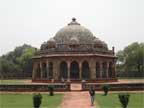|
| |
List of World Heritage sites
Main
Article page |
Beauty articles
|
Health page |
Computers|
Diseases |
Education |
Entertainment |
Family
Business |Fitness|
Fruits and Vegetables
|
Jobs |
General |
Personality|
Technology
|
Tourism |
Sports
Biography Page|
Heroes & Incredible peoples
|
Inventions
|
Useful Tips
World Heritage Site such as a forest, mountain,
lake, desert, monument, building, complex, or city is listed by the UNESCO
as of special cultural or physical significance. The list is maintained by the
international World Heritage Programme administered by the UNESCO .The programme
conserves sites of outstanding cultural or natural importance to the common
heritage of humanity.
As of 2012, 962 sites are listed: 745 cultural, 188 natural, and 29 mixed
properties, in 157 states parties.By sites ranked by country Italy is home to
the greatest number of World Heritage Sites with 47 sites, followed by Spain
(44) and China (43).
Nominating process
A country must first take an inventory of its significant cultural and natural
properties. This is called the Tentative List. A country may not nominate
properties that have not already been included on the Tentative List. Next, it
can select a property from this list to place into a Nomination File.
At this point, the file is evaluated by the International Council on Monuments
and Sites and the World Conservation Union. These bodies then make their
recommendations to the World Heritage Committee. The Committee meets once per
year to determine whether or not to inscribe each nominated property on the
World Heritage List, and sometimes defers the decision to request more
information from the country who nominated the site. There are few
selection criteria to be met by each site before listing.
List of World heritage sites
-
Chartres Cathedral
-
Mont-Saint-Michel and its
Bay
-
Palace and Park of
Versailles
-
Prehistoric Sites and
Decorated Caves of the Vézère Valley
-
Vézelay, Church and Hill
-
Amiens Cathedral
-
Arles, Roman and
Romanesque Monuments
-
Cistercian Abbey of
Fontenay
-
Palace and Park of
Fontainebleau
-
Roman Theatre and its
Surroundings and the "Triumphal Arch" of Orange
-
From the Great Saltworks
of Salins-les-Bains to the Royal Saltworks of Arc-et-Senans, the
Production of Open-pan Salt
-
Abbey Church of
Saint-Savin sur Gartempe
-
Gulf of Porto: Calanche
of Piana, Gulf of Girolata, Scandola Reserve
#
-
Place Stanislas, Place
de la Carrière and Place d'Alliance in Nancy
-
Pont du Gard (Roman
Aqueduct)
-
Strasbourg – Grande île
-
Cathedral of Notre-Dame,
Former Abbey of Saint-Rémi and Palace of Tau, Reims
-
Paris, Banks of the
Seine
-
Bourges Cathedral
-
Historic Centre of
Avignon: Papal Palace, Episcopal Ensemble and Avignon Bridge
-
Canal du Midi
-
Historic Fortified City
of Carcassonne
-
Pyrénées - Mont Perdu
*
-
Historic Site of Lyons
-
Routes of Santiago de
Compostela in France
-
Belfries of Belgium and
France
*
8
-
Jurisdiction of
Saint-Emilion
-
The Loire Valley between
Sully-sur-Loire and Chalonnes
9
-
Provins, Town of
Medieval Fairs
-
Le Havre, the City
Rebuilt by Auguste Perret
-
Bordeaux, Port of the
Moon
-
Fortifications of
Vauban
-
Lagoons of New
Caledonia: Reef Diversity and Associated Ecosystems
-
Episcopal City of Albi
-
Pitons, cirques and
remparts of Reunion Island
-
Prehistoric Pile
dwellings around the Alps
*
-
The Causses and the
Cévennes, Mediterranean agro-pastoral Cultural Landscape
-
Nord-Pas de Calais
Mining Basin
-
Rock Drawings in
Valcamonica
-
Church and Dominican
Convent of Santa Maria delle Grazie with
-
Historic Centre of Rome,
the Properties of the Holy See in that City Enjoying
Extraterritorial Rights and San Paolo Fuori le Mura
*
13
-
Historic Centre of
Florence
-
Piazza del Duomo, Pisa
-
Venice and its Lagoon
-
Historic Centre of San
Gimignano
-
The Sassi and the Park
of the Rupestrian Churches of Matera
-
City of Vicenza and the
Palladian Villas of the Veneto
-
Crespi d'Adda
-
Ferrara, City of the
Renaissance, and its Po Delta
14
-
Historic Centre of
Naples
-
Historic Centre of Siena
-
Castel del Monte
-
Early Christian
Monuments of Ravenna
-
Historic Centre of the
City of Pienza
-
The Trulli of
Alberobello
-
18th-Century Royal
Palace at Caserta with the Park, the Aqueduct of Vanvitelli, and the
San Leucio Complex
-
Archaeological Area of
Agrigento
-
Archaeological Areas of
Pompei, Herculaneum and Torre Annunziata
-
Botanical Garden (Orto
Botanico), Padua
-
Cathedral, Torre Civica
and Piazza Grande, Modena
-
Costiera Amalfitana
-
Portovenere, Cinque
Terre, and the Islands (Palmaria, Tino and Tinetto)
-
Residences of the Royal
House of Savoy
-
Su Nuraxi di Barumini
-
Villa Romana del Casale
-
Archaeological Area and
the Patriarchal Basilica of Aquileia
-
Cilento and Vallo di
Diano National Park with the Archeological Sites of Paestum and
Velia, and the Certosa di Padula
-
Historic Centre of
Urbino
-
Villa Adriana (Tivoli)
-
Assisi, the Basilica of
San Francesco and Other Franciscan Sites
-
City of Verona
-
Isole Eolie (Aeolian
Islands)
-
Villa d'Este, Tivoli
-
Late Baroque Towns of
the Val di Noto (South-Eastern Sicily)
-
Sacri Monti of
Piedmont and Lombardy
-
Monte San Giorgio
*
-
Etruscan Necropolises
of Cerveteri and Tarquinia
-
Val d'Orcia
-
Syracuse and the Rocky
Necropolis of Pantalica
-
Genoa: Le Strade
Nuove and the system of the Palazzi dei Rolli
-
Mantua and Sabbioneta
-
Rhaetian Railway in the
Albula / Bernina Landscapes
*
-
The Dolomites
-
Longobards in Italy.
Places of the Power (568-774 A.D.)
-
Prehistoric Pile
dwellings around the Alps
*
For latest list refer
World heritage sites
| |
|





